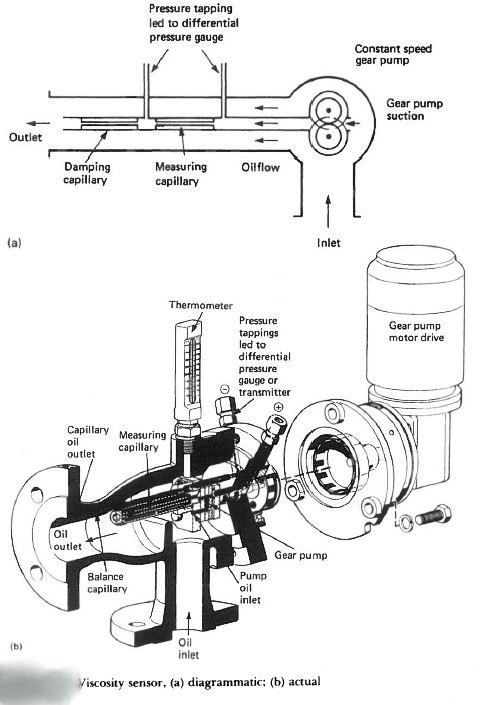Home || Diesel Engines
||Boilers||Feed Systems
||Steam Turbines ||Fuel Treatment ||Pumps ||Refrigeration ||
Viscosity Control for Marine Fuel Oil
Viscosity control of fuels is essential if correct atomisation and
combustion is to take place. Increasing the temperature of a fuel will
reduce its viscosity, and vice-versa. As a result of the varying properties
of marine fuels, often within one tank, actual viscosity must be
continuously measured and then corrected by temperature adjustment.
The sensing device is shown in Figure below.



